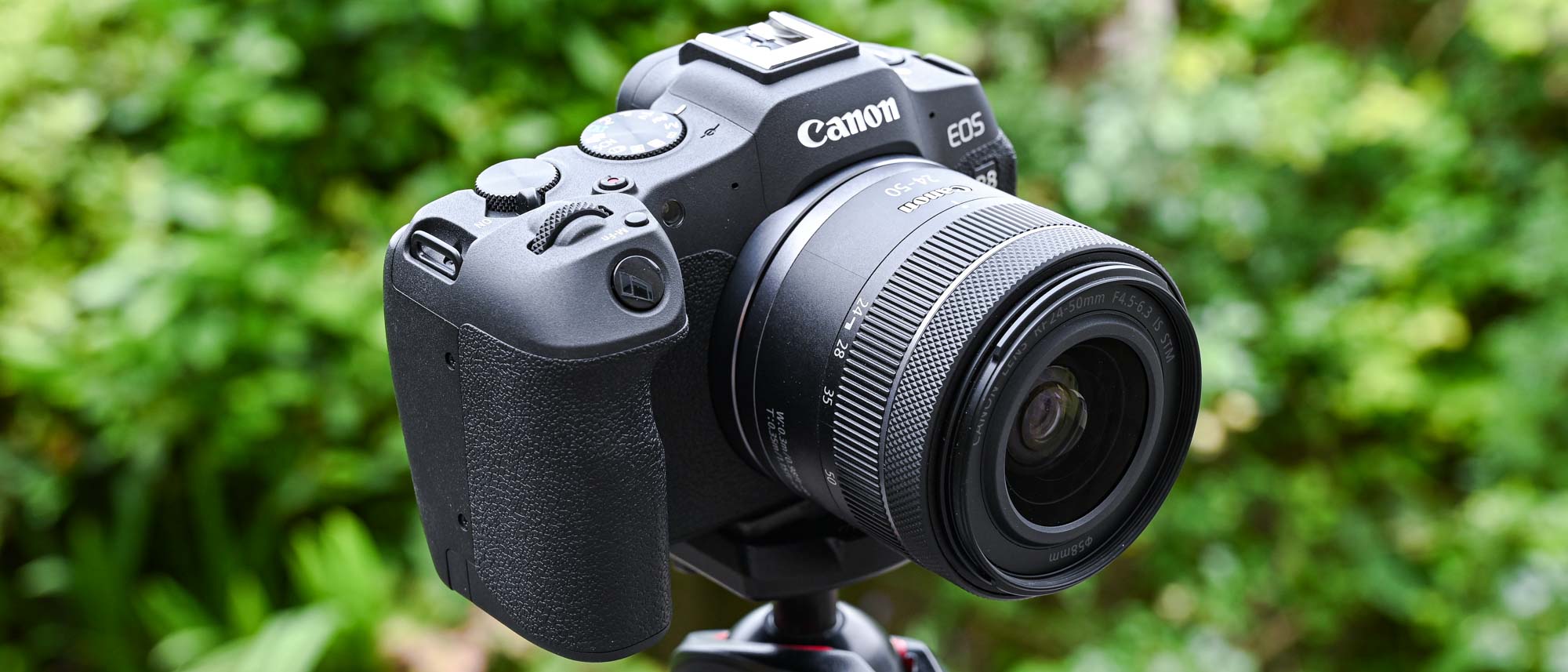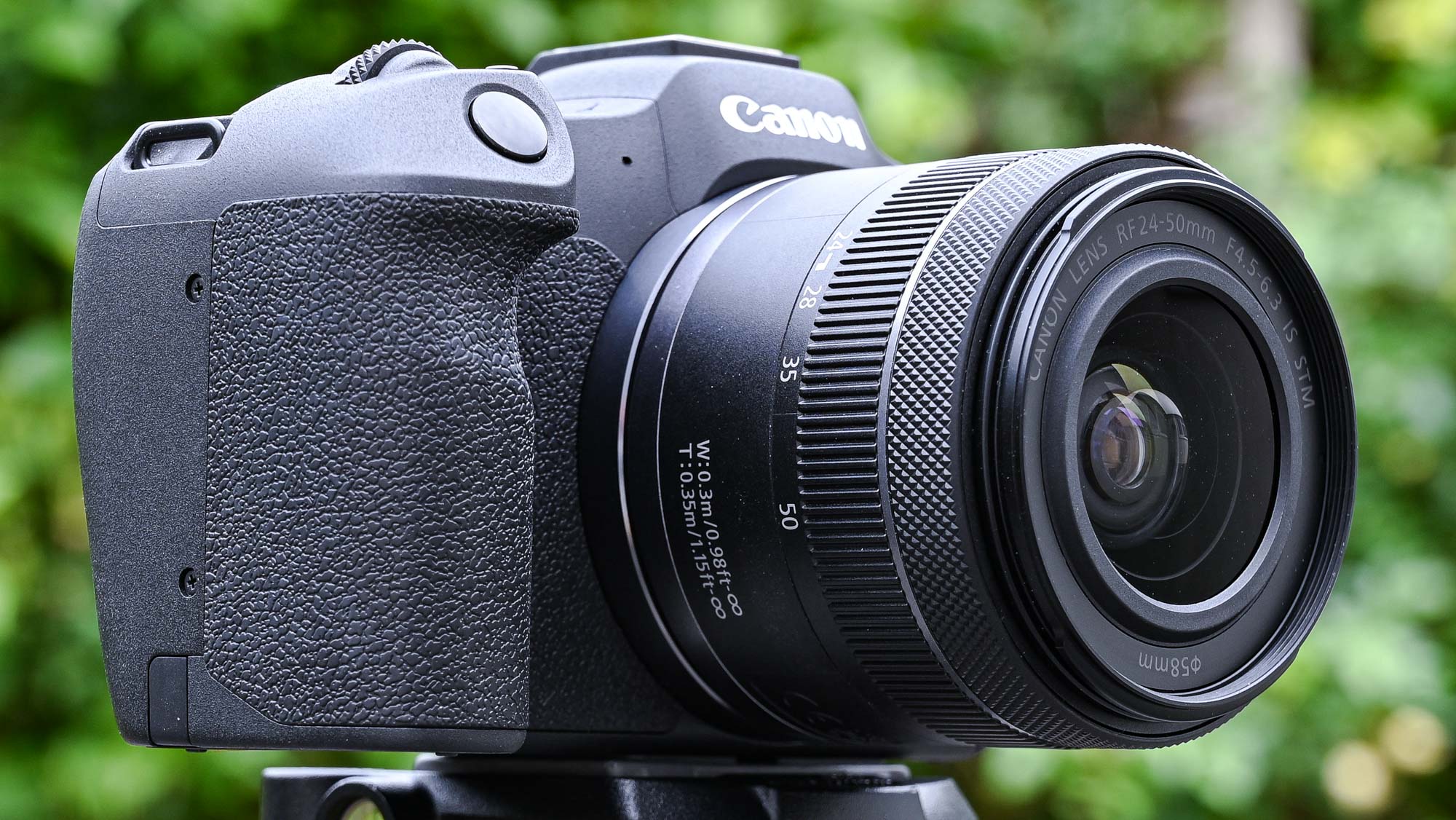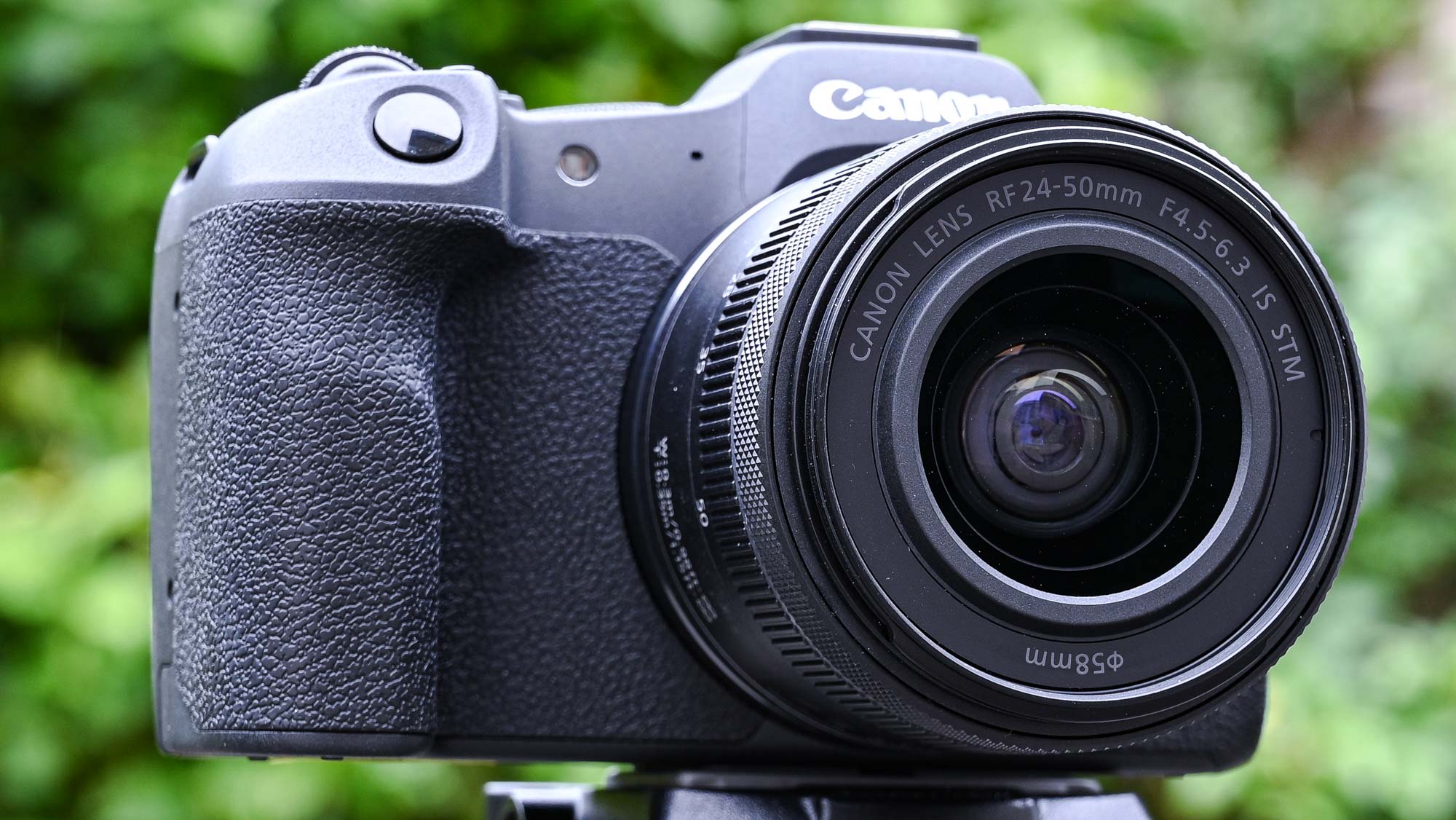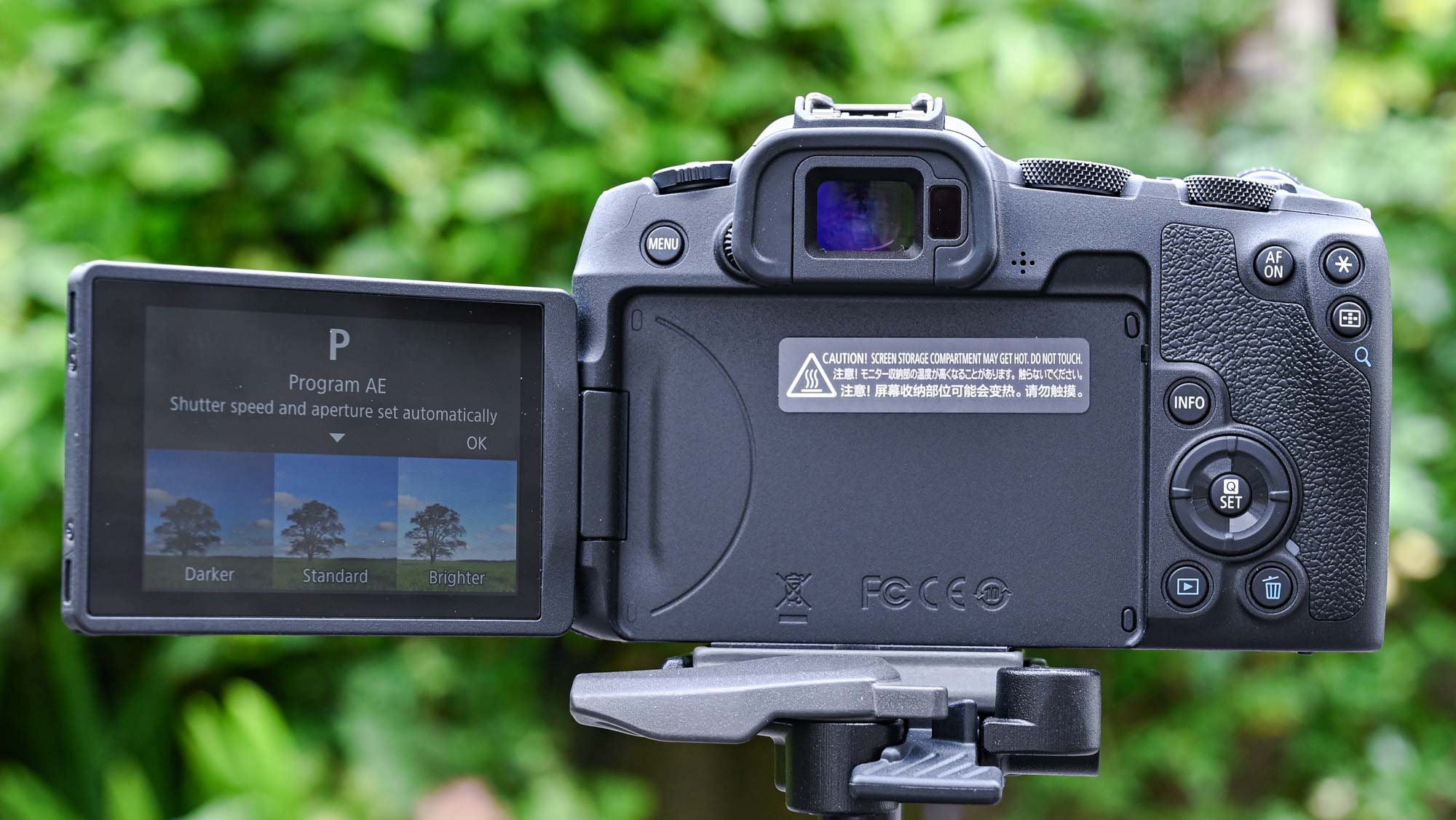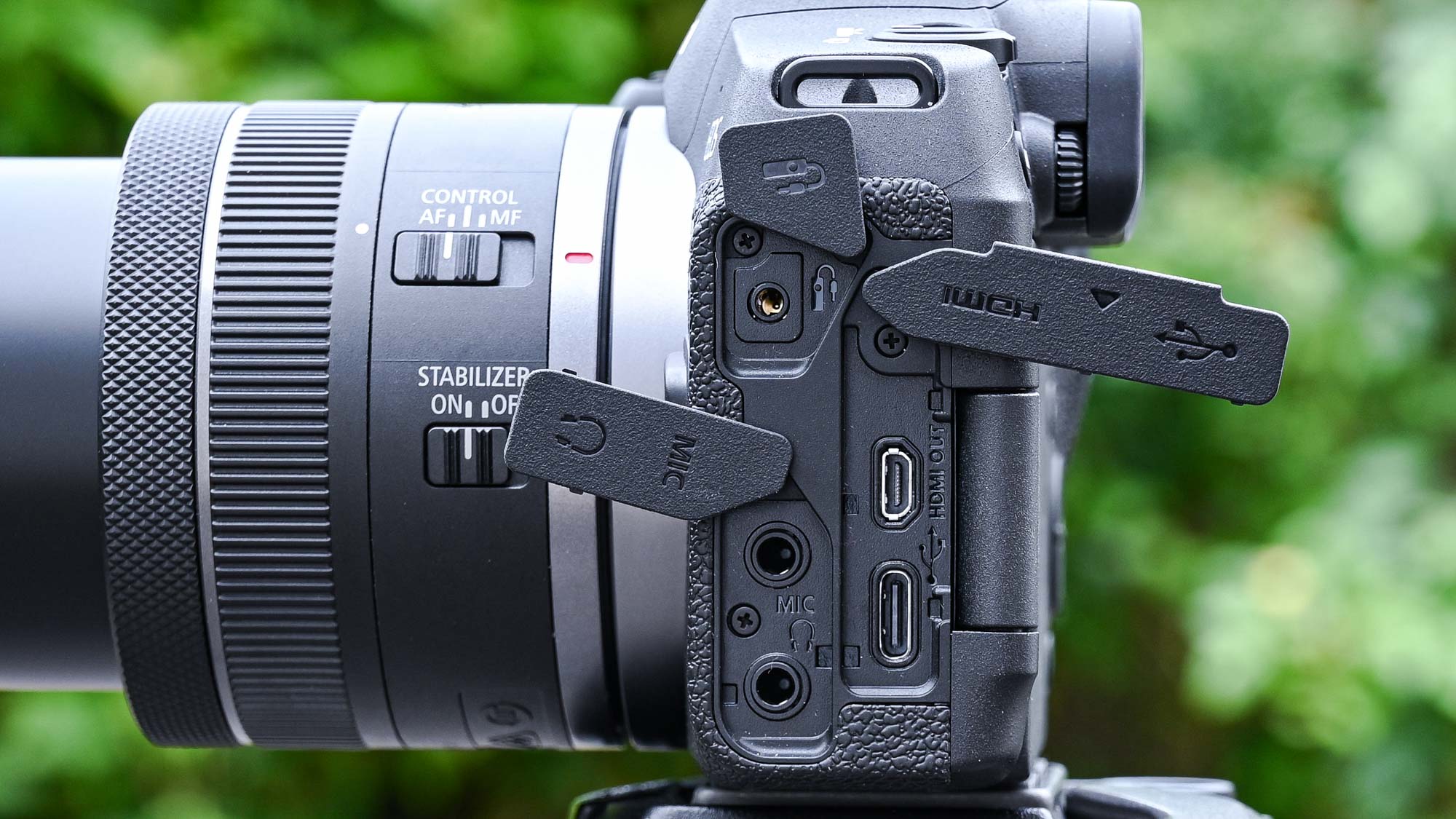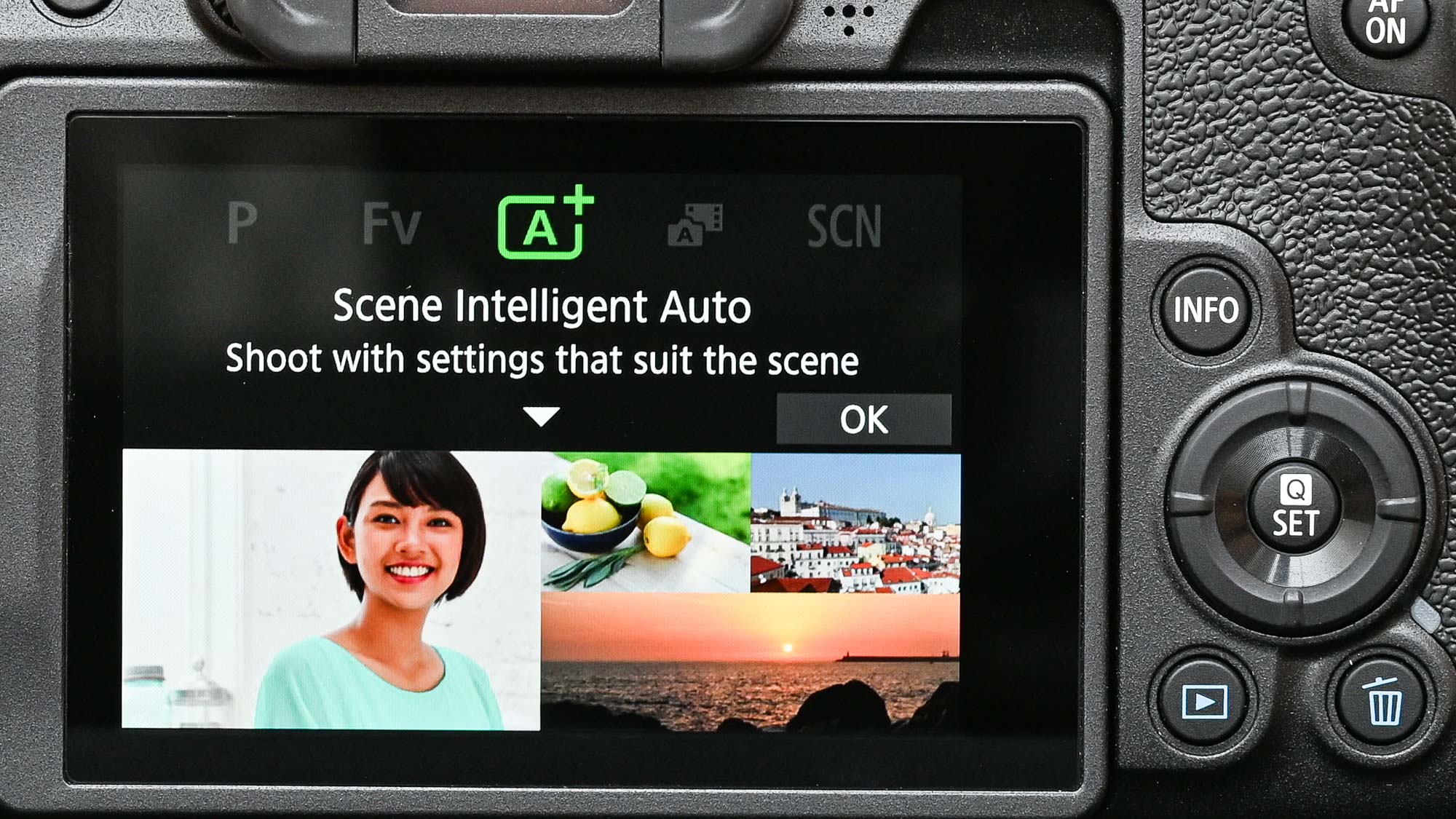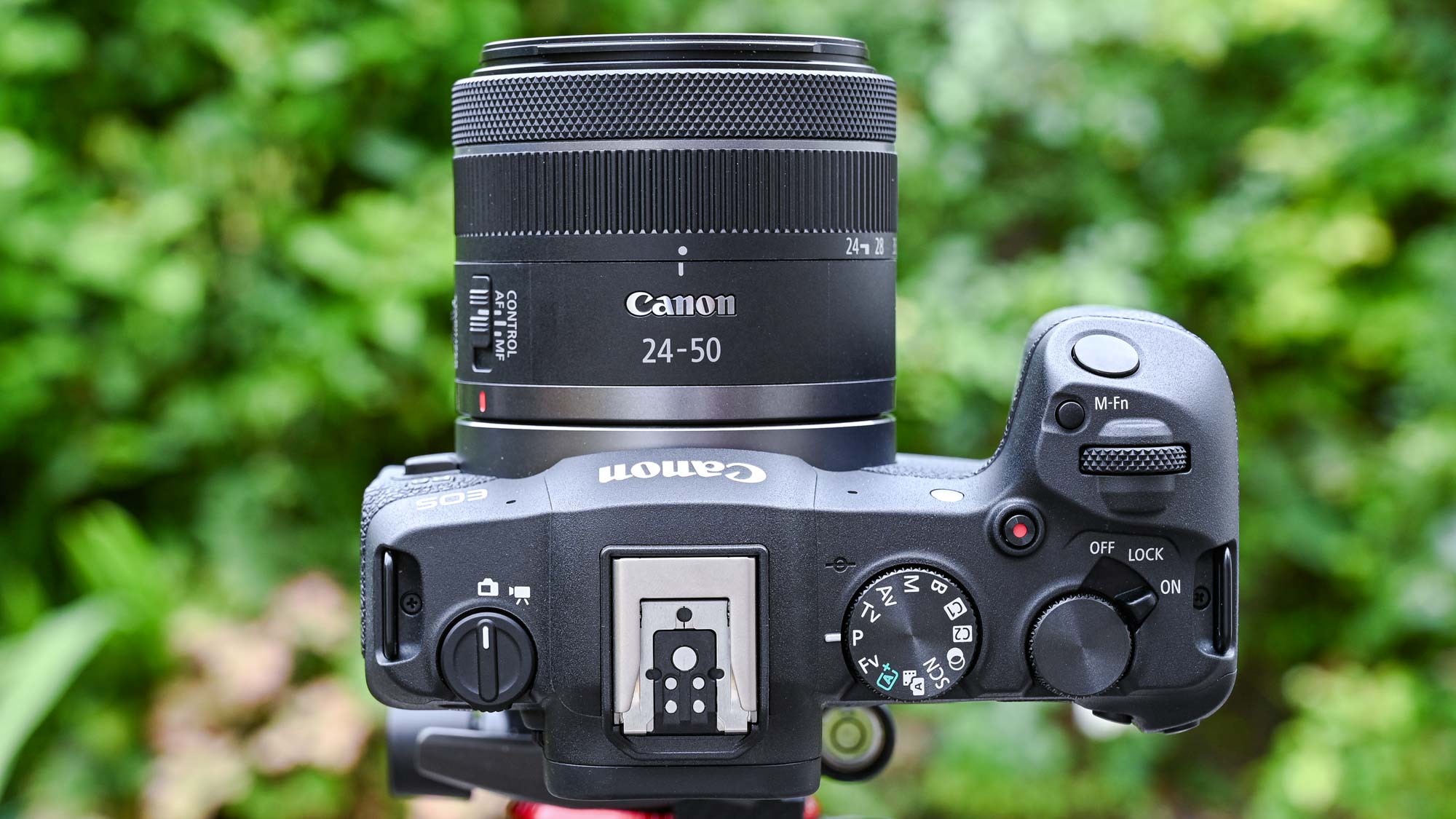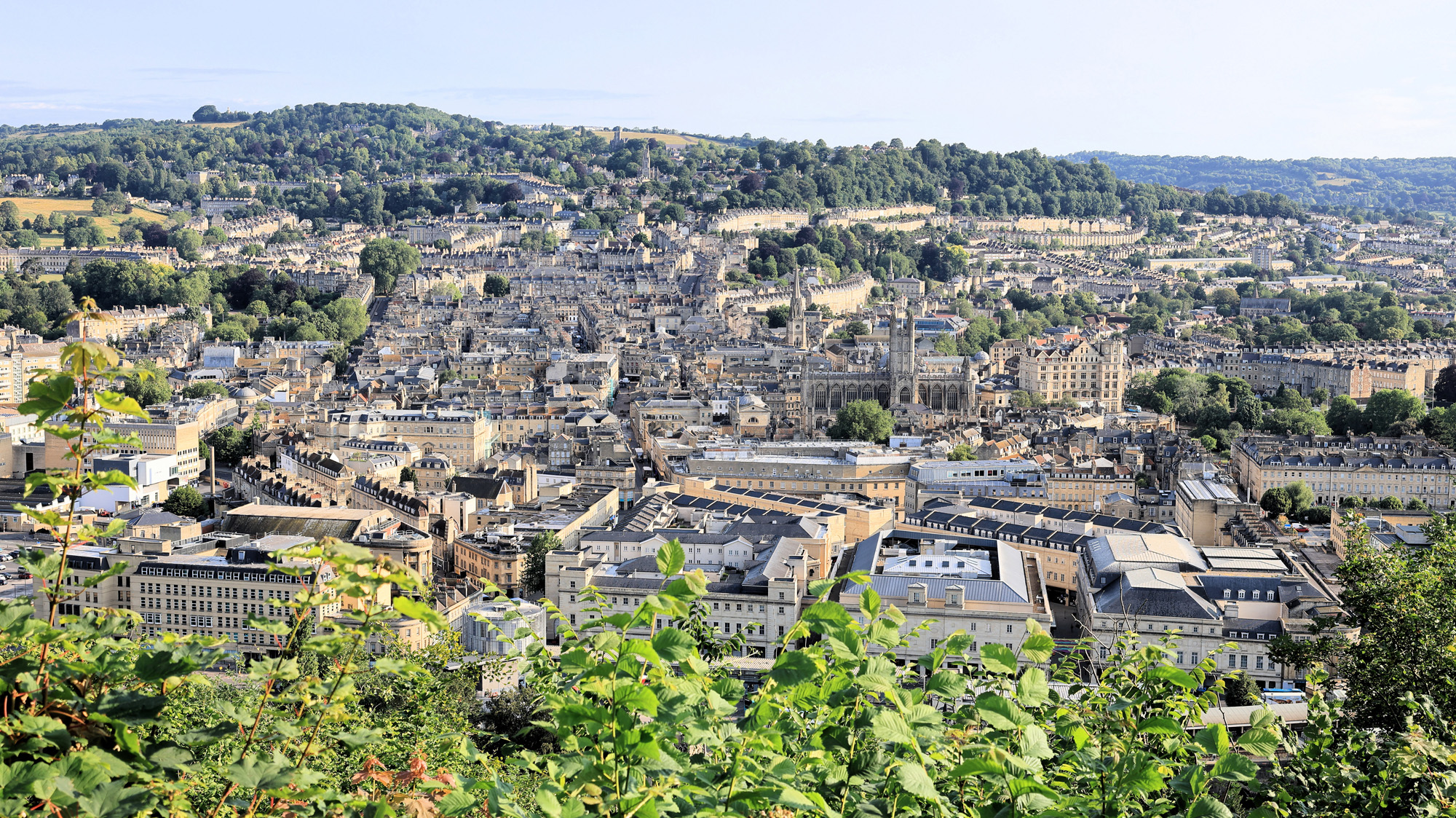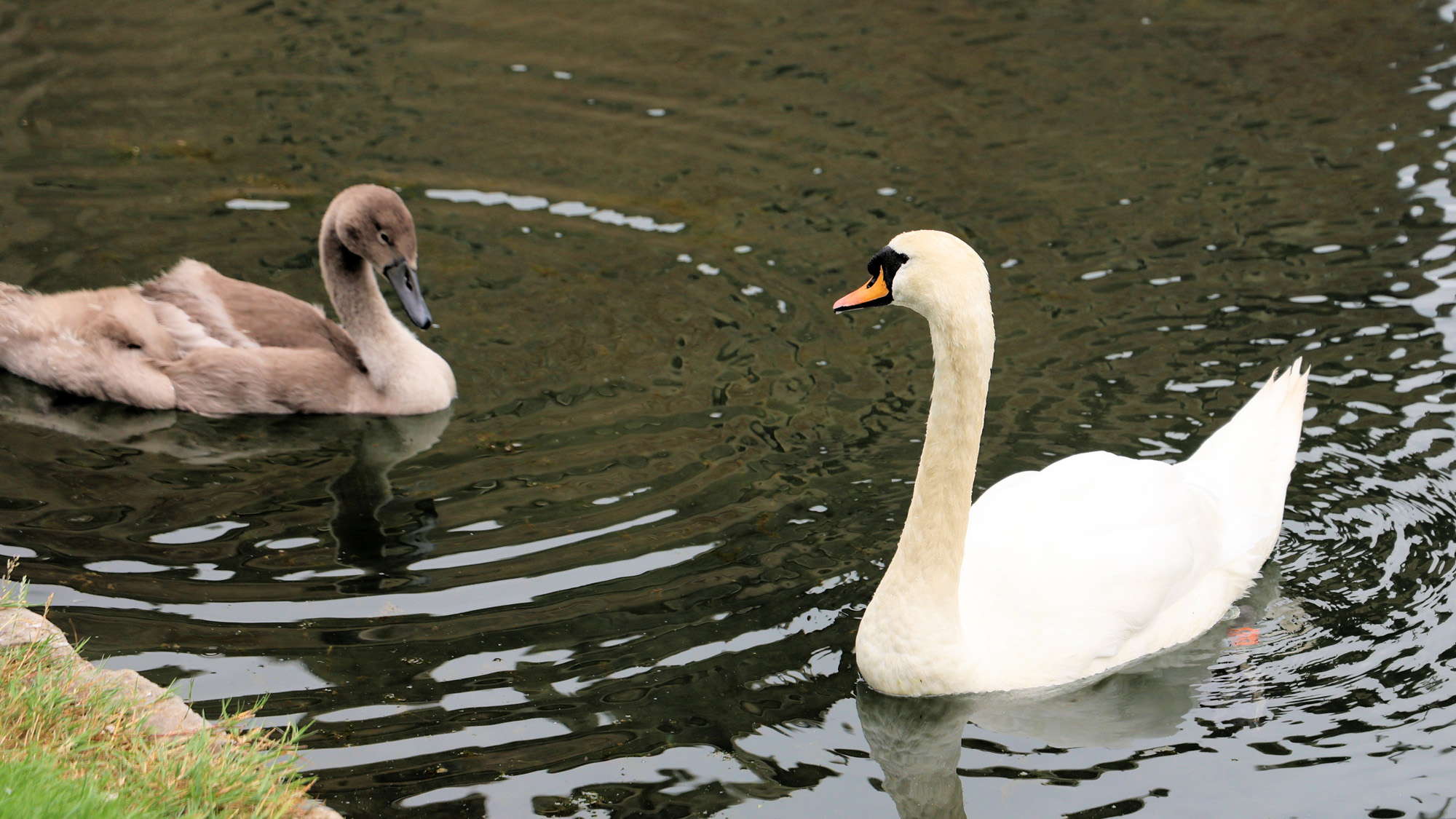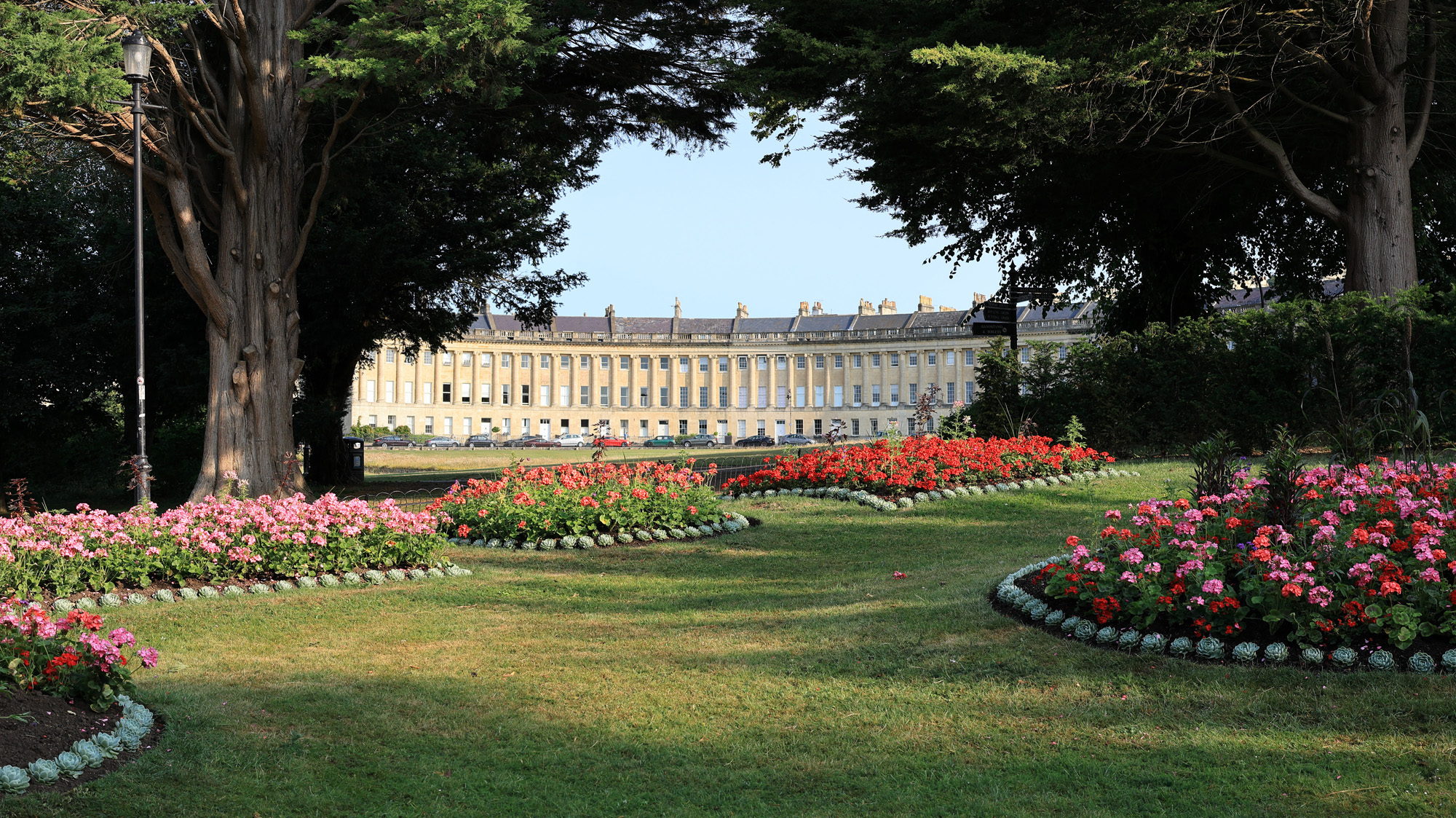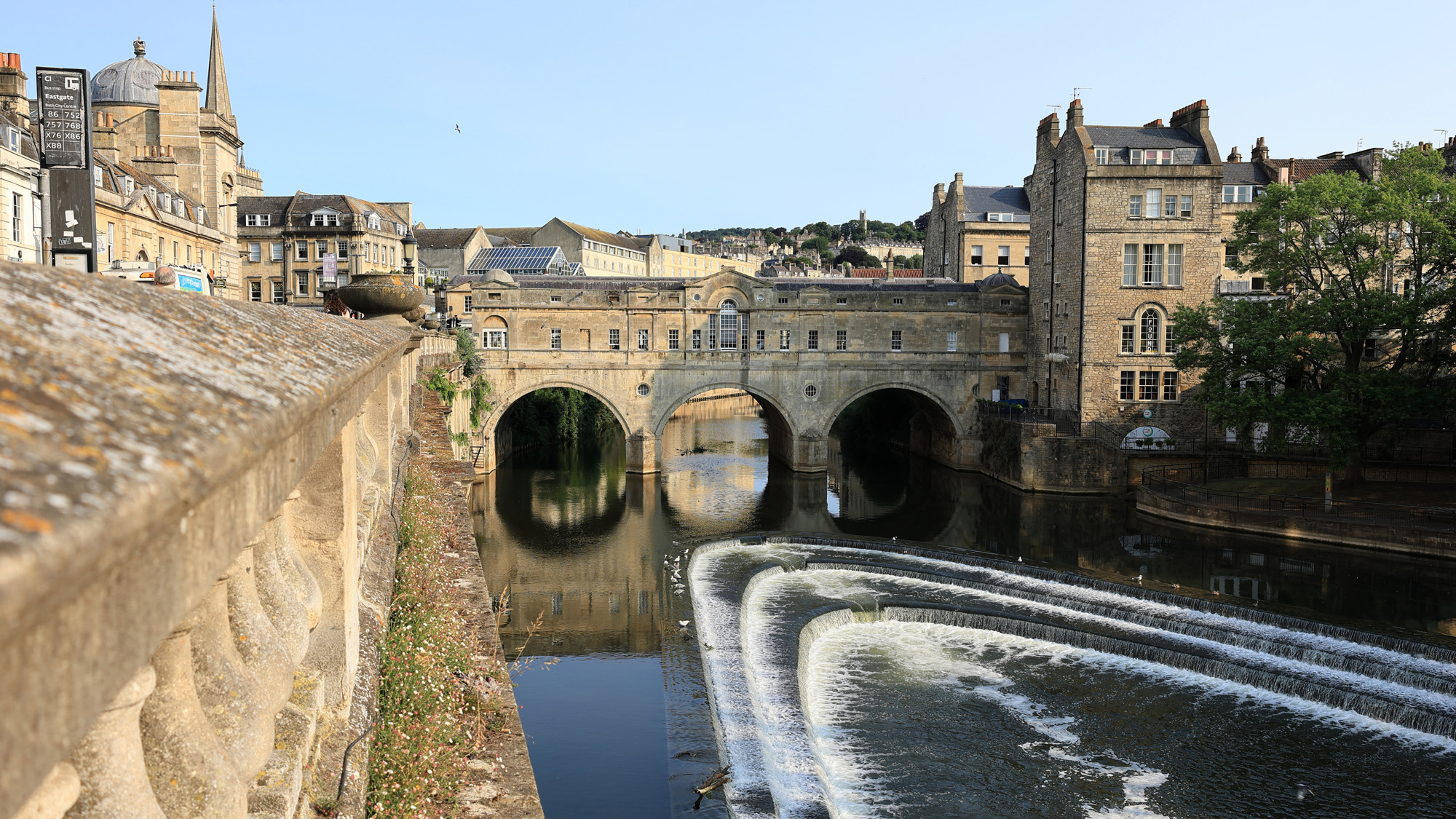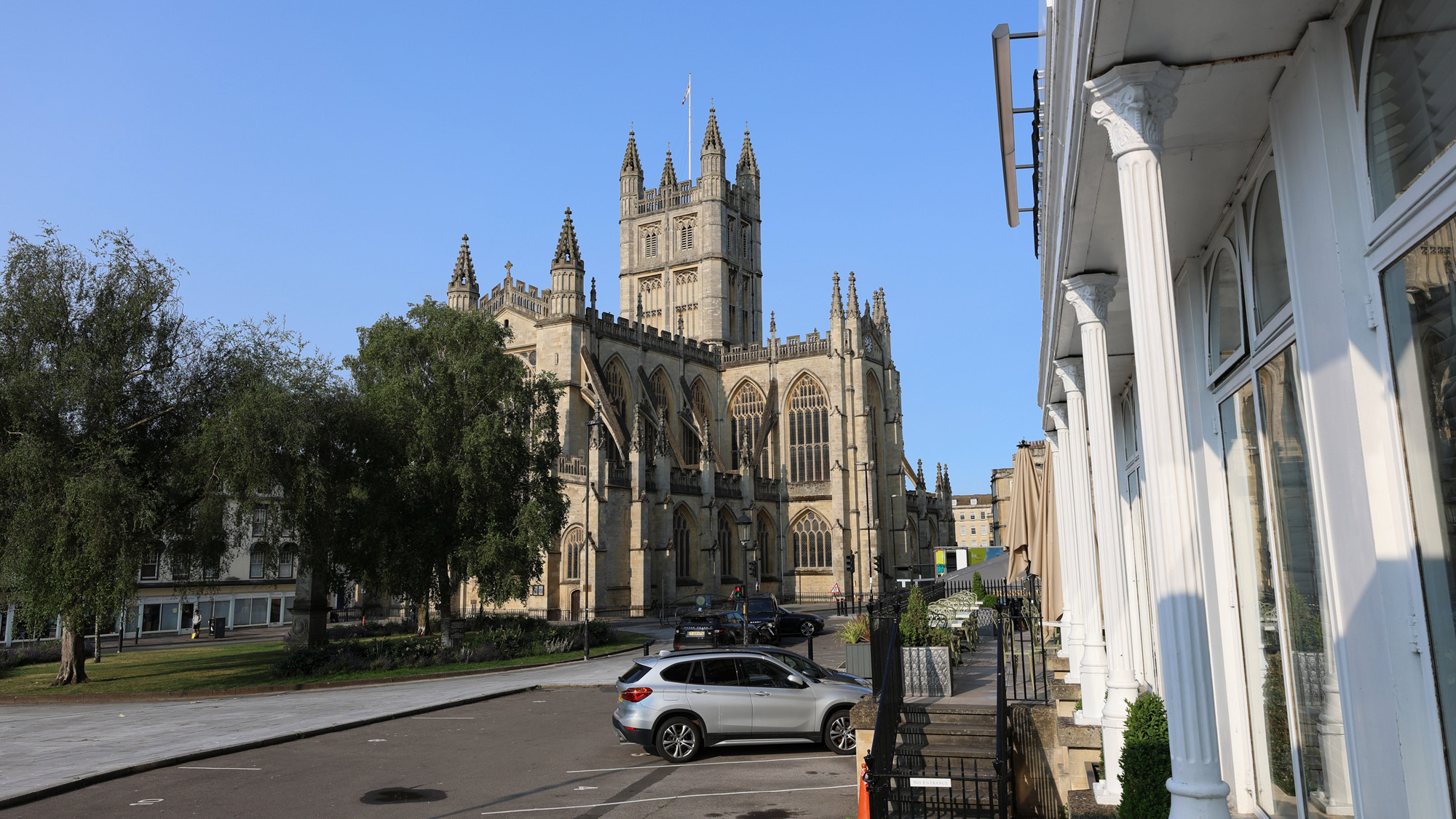Tom's Guide Verdict
The Canon EOS R8 squeezes many features of the pricier EOS R6 Mark II into a compact and lightweight build. It has the same 24.2MP full-frame image sensor, Canon’s incredible autofocusing system, a 40 fps burst rate and impressive 4K video performance. However, the viewfinder is disappointing and controls are limited, while no in-body image stabilization (IBIS) and only one memory card slot limit it to the enthusiast market.
Pros
- +
Fantastic stills and video capture
- +
Incredible autofocus
- +
Ultra-fast 40fps burst rate
- +
Unlimited recording time for 4K/30p
Cons
- -
No in-body image stabilization
- -
Small viewfinder for a full-frame camera
- -
Only one memory card slot
- -
Lacking direct controls
Why you can trust Tom's Guide
Sensor: 24.2MP full-frame Dual Pixel CMOS AF II
Image processor: DIGIC X
Image stabilization: Via lens + Movie Digital IS; No IBIS
AF points: 4,897-point
Viewfinder: 0.39-inch OLED EVF, 3.36M dots
Display: 3.0-inch Vari-Angle color LCD, 1.62M dots
ISO: 100-102,400 (expandable to 50-204,801)
Max video resolution: 4K at 60p
Ports: USB type-C, micro HDMI, mic mini jack, headphone mini jack, hot shoe, remote control
Storage: 1x SD/SDHC/SDXC UHS-II
Wireless: Wi-Fi 5/2.4GHz, Bluetooth 4.2
Shooting speed: 6fps mechanical, 40fps electronic
Battery life (CIPA): 290-370 shots LCD, 150-220 shots viewfinder (smooth/power-saving)
Size/weight (body inc battery, card): 5.22 x 3.39 x 2.76 inches; 1.01 lbs
The Canon EOS R8 is billed as the company’s most compact and lightweight full-frame camera body to date. Even so, it’s barely any smaller or lighter than the diminutive EOS RP, to which the EOS R8 is a natural successor.
The EOS RP wasn’t a perfect camera by any means, although we felt it was one of the best mirrorless cameras around. Aimed at providing enthusiasts their first full frame camera and bringing them into the grown up EOS R-system cameras — just like the EOS R8 — the RP delivered beautiful image quality in a compact and affordable package. However, it lacked IBIS, had poor battery life, a slow continuous shooting speed and video recording limitations.
The EOS R8 is aimed at the same market, and addresses some, but not all, of its predecessor’s issues. Find out more in our Canon EOS R8 review.
Canon EOS R8 review: Price and availability
The Canon EOS R8 is competitively priced for a full-frame mirrorless camera. It sells for around $1,499/£1,699 for the body on its own, putting it in the same ballpark as the Nikon Z 6II and Sony a7 III. However, if you’re investing in a full-frame camera, the chances are you might well be trading up from a crop-sensor camera. Taking the crop factor out of the equation gives you more potential to get a tighter depth of field and blur the background, especially useful in portraiture. But you might also need to upgrade to a full-frame compatible lens, so it’s tempting to buy the R8 as a kit, complete with a discounted lens.
Sadly, the only kit lens currently available with the R8 is the Canon RF 24-50mm F4.5-6.3 IS STM. The kit price of around $1,699/£1,899 gives you a decent discount on this lens but for many photographers, it’s not an ideal choice. It has a very compact, retractable design and is surprisingly lightweight at just 13 ounces (210g). It also features 4.5-stop optical image stabilization, which is very useful considering the R8’s lack of IBIS. However, while it has good wide-angle potential, it has no real telephoto reach, only stretching to a ‘standard’ 50mm focal length. The f/6.3 aperture rating is also quite narrow at the long end of the zoom range, so you’ll struggle to get a tight depth of field and nice bokeh – a key selling point of any full-frame camera. The lens also feels like it’s built down to a price, with a plastic rather than metal mounting plate, although that helps in keeping the weight to a minimum.
We’d like to see the Canon RF 24-105mm F4-7.1 IS STM offered as a kit zoom for this camera. It’s still fairly compact and lightweight but gives much greater versatility, complete with a 0.5x macro facility. Bought separately, it retails for around $399/£479, not massively more than the $299/£379 for the RF 24-50mm lens. Another couple of excellent compact, lightweight and relatively inexpensive lenses you can buy separately that work really well with the R8 are the ‘nifty fifty’ Canon RF 50mm F1.8 STM ($199/£219) and the ultra-wide-angle Canon RF 16mm F2.8 STM ($249/£299).
Canon EOS R8 review: Design
The Canon EOS R8 has a very streamlined design. Downsizing is key if you want a camera you can take anywhere and everywhere, without having to lug around a big kit. Coupled with a similarly small lens or two, you can slip the R8 into your daily bag with ease and comfort. Nobody wants to miss a great photo opportunity because they’d left their bulky camera kit at home.
Get instant access to breaking news, the hottest reviews, great deals and helpful tips.
Versus the EOS RP, the newer R8 is the exact same width and depth, and only 1/25th of an inch (1mm) shorter. It’s also just under a single ounce (27g) lighter. Suffice it to say, the differences aren’t exactly noticeable. It measures in at 5.22 x 3.39 x 2.76 inches, and weighs in at just over 16 ounces.
The body materials are a mix of magnesium alloy and glass fiber-reinforced polycarbonate parts. It’s not a comprehensively weather-sealed camera but nevertheless has a splash/dust-resistant design. Although built to be small, the camera has a deep, textured grip area and feels comfortable and natural to use, even if you have big hands. Typical of Canon R-System bodies and RF lenses, it’s smartly turned out with a quality look and feel.
Put your eye to the viewfinder and first impressions can be a little disappointing. Many full-frame mirrorless cameras have a generously proportioned 0.5-inch electronic viewfinder, whereas the R8 has a relatively small 0.39-inch unit, more typical of crop-sensor mirrorless cameras. Even so, it has a high resolution of 3.36 million dots and delivers a highly-detailed display.
Around the back, the 3-inch touchscreen is a more regular size. Again, there’s no shortage of resolution, with 1.62 million dots across its surface. Better still, the touchscreen is fully articulated, so you can swing it out from the camera and use it at any angle. It’s great for shooting from ground level without getting down on your knees, for shooting over crowds with the camera high above your head, and even for shooting around corners. All in all, the vari-angle touchscreen is a major bonus for finding creative angles to shoot from, as well as for taking selfies and vlogging when you’re in front of the camera.
Weather-resistant flaps on the left hand side of the camera reveal a good array of connection ports. These include USB type-C, micro HDMI, stereo microphone mini jack, stereo headphones mini jack and a remote control socket. There’s also a new-generation, multi-function hot-shoe up on top, which enables the attachment of smart accessories like Canon’s DM-E1D stereo microphone and AD-P1 Smartphone Adaptor. For wireless connectivity, there’s Bluetooth 4.2 for connecting to smartphones and other Android/Apple devices, as well as Canon’s neat little BR-E1 Bluetooth wireless remote controller, which costs around $45/£40. Wi-Fi is also built in, with full compatibility for both 5GHz and 2.4GHz.
For storage, there’s an SD/SDHC/SDXC memory card slot. It can make full use of the latest super-fast UHS-II format cards, which you’ll need to make the most of the camera’s 40fps maximum drive rate in electronic shutter mode, as well as for shooting 4K UHD video at the fastest 60/50 frame rates. Unlike higher-end enthusiast and professional cameras like the EOS R6 Mark II, however, the R8 only features one card slot rather than dual slots. That’s a shame as the second slot would have given the option of creating instant backups as you shoot — a necessity for anyone hoping to use this camera for professional work — or for storing still images on one card and movie clips on the other.
Canon EOS R8 review: Controls
The downsized design of the Canon EOS R8 extends to its control dials and buttons, or rather the lack of them. All the essentials are covered but that’s about it. If you’re trading up from a similarly priced DSLR, you might miss direct, hands-on controls for shooting parameters like autofocus and metering modes, white balance, ISO and the like. As with the EOS R50, access to controls that you often need to adjust is consigned to a touchscreen interface.
Thankfully, the ‘Quick menu’ is instantly accessible via the Q button on the rear panel, and the menu itself is simple to navigate using the 4-way pad or by simply pressing the salient areas of the touchscreen. Many RF lenses also come with a control ring that can have functions such as aperture or ISO assigned to it.
The Info button is handy for giving a range of different options for what information is displayed in the viewfinder and on the rear screen. For the finer points, the Menu button lets you into an exhaustive list of options for shooting, video, playback, setup and custom settings. The only downside is that it can take a frustratingly long time to get from one area of the menu system to another. For fast-tracking, you can populate a ‘My Menu’ section with your favored and often-used options, complete with multiple tabs if you’ve got a lot of them.
Up on top, there’s a conventional shooting mode dial which includes all of the regular modes, plus scene modes and filter effects. There are also two Custom options, great for storing favorite sets of shooting settings that you often want to dial up instantly. Over on the left hand side of the top panel, we particularly like the stills/movie switch. Given that the R8 is so good for both stills and movie capture, it’s great being able to switch between the two with a simple flick of the thumb, without even taking your eye away from the viewfinder. The M-Fn (Multi-Function) button situated just behind the shutter-release button is another nice touch, giving quick access to a range of shooting adjustments.
So what’s lacking? Well, there’s no rear control dial nor a joystick for easily moving the active focus point around the frame, as featured on the pricier EOS R6 Mark II and many other EOS R-system cameras. But if you’ve never had them, you probably won’t miss them, and if you’re composing shots on the rear screen rather than with the viewfinder, you can simply tap on a point in the preview image to autofocus on that point in the scene.
Canon EOS R8 review: Performance
The Canon EOS R8 excels in most areas of performance. That’s hardly surprising as the new-generation image sensor and autofocus system are exactly the same as the ones featured in the more up-market EOS R6 Mark II, which was launched a few months earlier. The exposure metering system works well, helped along in practical terms by Canon’s usual Auto Lighting Optimizer option, which we’ll come back to later. The net result is that the R8 does well to retain plenty of detail in both bright highlights and dark shadows when shooting high-contrast scenes. We tested this by shooting scenes which featured very bright and dark regions, as with the example shot below.
The Dual Pixel CMOS AF II sensor has no less than 4,897 phase-detection autofocus points across almost its entire surface. That’s coupled with new-generation, deep-learned AI autofocus that boasts subject recognition for people (body, face, eye including auto, right-eye and left-eye options), animals (dogs, cats, birds and horses) and vehicles (cars, motorcycles, aircraft and trains). A new addition is an ‘Auto’ subject detection option that aims to figure out the main object of interest in a scene and home in on that.
If you wanted the same kind of auto-detection in a Nikon full frame camera, you’d have to stretch to a Z 8 or Z 9, which are much more expensive to buy. And while the pricier Sony A7 III and much pricier Sony A7 IV both have vaunted autofocus systems, the Sony cameras still fall short to Canon due to no vehicle detection. The APS-C Fujifilm X-T5 features vehicle, animal and human detection, but in the full frame world, on paper at least, Canon’s AF system is unmatched, especially given the price of the R8 and other mid-tier cameras featuring the system (like the EOS R7 and EOS R10).
In real terms, the EOS R8’s autofocus can latch onto pretty much anything and track it with breathtaking tenacity. We tested the animal autofocus by photographing swans in an English cathedral grounds. In the image below, the swan was continually moving its head around while we were shooting. The animal autofocus tracking locked onto its eyes and tracked them continuously with incredible accuracy, delivering a practically perfect hit rate throughout a high-speed burst of shots.
The autofocus keeps working in almost complete darkness, too, equating to barely more than a quarter-moon of light in a scene with no supplemental lighting. The performance is boosted in no small measure by the sheer speed of the data connection between the camera and RF lenses. The latest iteration of EF mount lenses designed for DSLRs has a rather faster data transfer rate than back in the days of film cameras, but the RF mount speed is in a different league altogether, a bit like hopping off a moped and jumping into a supercar.
To test color rendition, clarity and sharpness, we selected scenes with natural colors and lots of fine detail. The 24-50mm kit lens might not be the sharpest tool in Canon’s box but the R8’s Digital Lens Optimizer menu option certainly makes the most of it, effectively boosting its resolving power and minimizing aberrations.
Canon is proud of the R8’s super-fast continuous drive rate, but there’s a catch. In regular mechanical shutter mode, the R8 only manages a fairly pedestrian 6fps. Switch to the electronic shutter, however, and it leaps to an incredible 40fps. But there’s still a catch. The APS-C format EOS R7 tops out at a still very quick 30fps but delivers both autofocus tracking and exposure metering for every successive shot. With the R8, you only get autofocus tracking, while metering is locked at the exposure value of the first frame. That can be an issue if you’re tracking a subject moving between areas of shadows and light.
The following test shot is rich in contrast but dynamic range proved impressive even when shooting in JPEG mode, which has an 8-bit color depth. You can expand the range by shooting in 10-bit HEIF quality mode, whereas 14-bit RAW quality mode gives the greatest latitude for pulling back blown highlights and boosting dark shadows at the editing stage, using one of the best photo editing software applications.
High-speed shooting is backed up by a generous buffer depth equating to over 1,000 shots at 6fps in mechanical shutter mode. Unsurprisingly, switching to 40fps with the electronic shutter has a big impact but you can still keep going for around 120 shots in JPEG and HEIF quality settings, and 100 shots in Compressed RAW mode, which is pretty impressive. You can also make use of the buffer with the optional RAW Burst mode, which captures 15 shots in the half-second before you fully press the shutter release button, after applying a light press for autofocus and metering. For unpredictable subjects, it makes the difference between getting the definitive shot and missing it altogether.
To capture expansive shots with a wide field of view, the R8’s 24-50mm kit lens fits the bill nicely. We took the following shot at the lens’s widest-angle focal length and it certainly shoehorns a lot into the image frame, with good sharpness out to the edges and corners.
The R8 is brilliant for freezing even very fast movement. The 1/4000th of a second maximum mechanical shutter speed is nothing special but, again, switch to the electronic shutter and it doubles to 1/8000th and jumps to 1/16,000th of a second in shutter-priority and manual shooting modes. A further bonus is that you can effectively freeze motion even under dull lighting conditions, as the camera delivers really clean image quality with good retention of fine detail at very high ISO settings. That’s a bonus of the relatively modest full-frame megapixel count, compared with cameras like the EOS R5. The ‘photosites’ on the image sensor (equating to pixels in the resulting image) can be physically larger and therefore have greater light-gathering potential, as demonstrated in the following pair of shots taken under very low lighting at ISO 200 and ISO 25600.
Dynamic range is excellent at low to medium ISO settings, helped along by Canon’s usual inclusion of an Auto Lighting Optimizer mode. This helps to rein in very bright highlights and boost shadow detail, resulting in nicely balanced and natural looking exposures. You can choose three different strengths in the camera’s menu, or switch it off altogether if you prefer. An HDR (High Dynamic Range) shooting option is also available.
The flipside to reining in bright highlights and boosting dark shadows is that the R8 is equally adept at producing natural yet vibrant and colorful images even under dull and overcast lighting conditions. For the latter, we took a series of test shots of garden flowers under very flat lighting on a cloudy day.
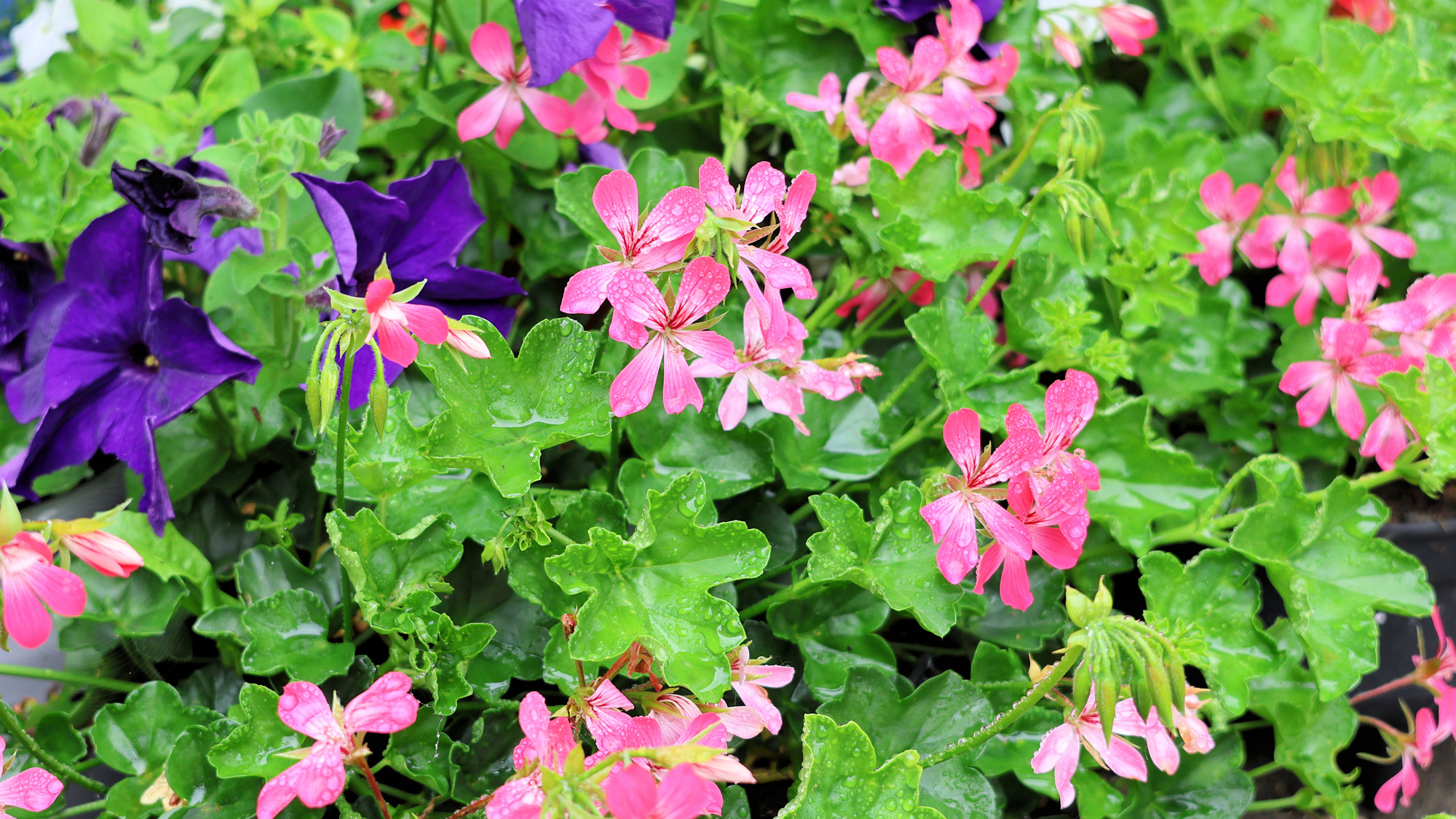
This gallery of five garden shots was taken under flat lighting beneath a very overcast sky. Even so, the EOS R8 delivered vibrant and highly attractive images with excellent color rendition and real bite.
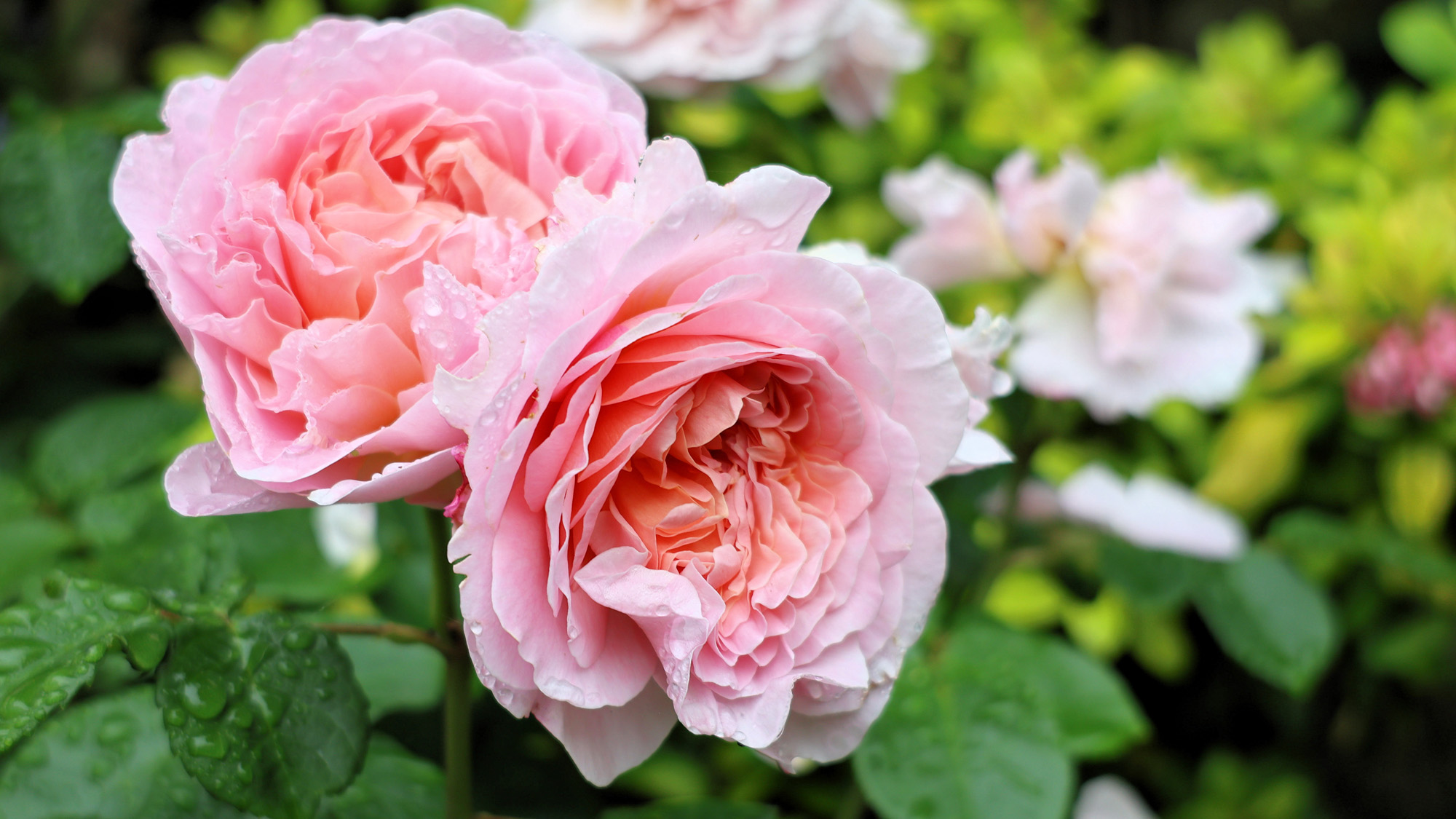
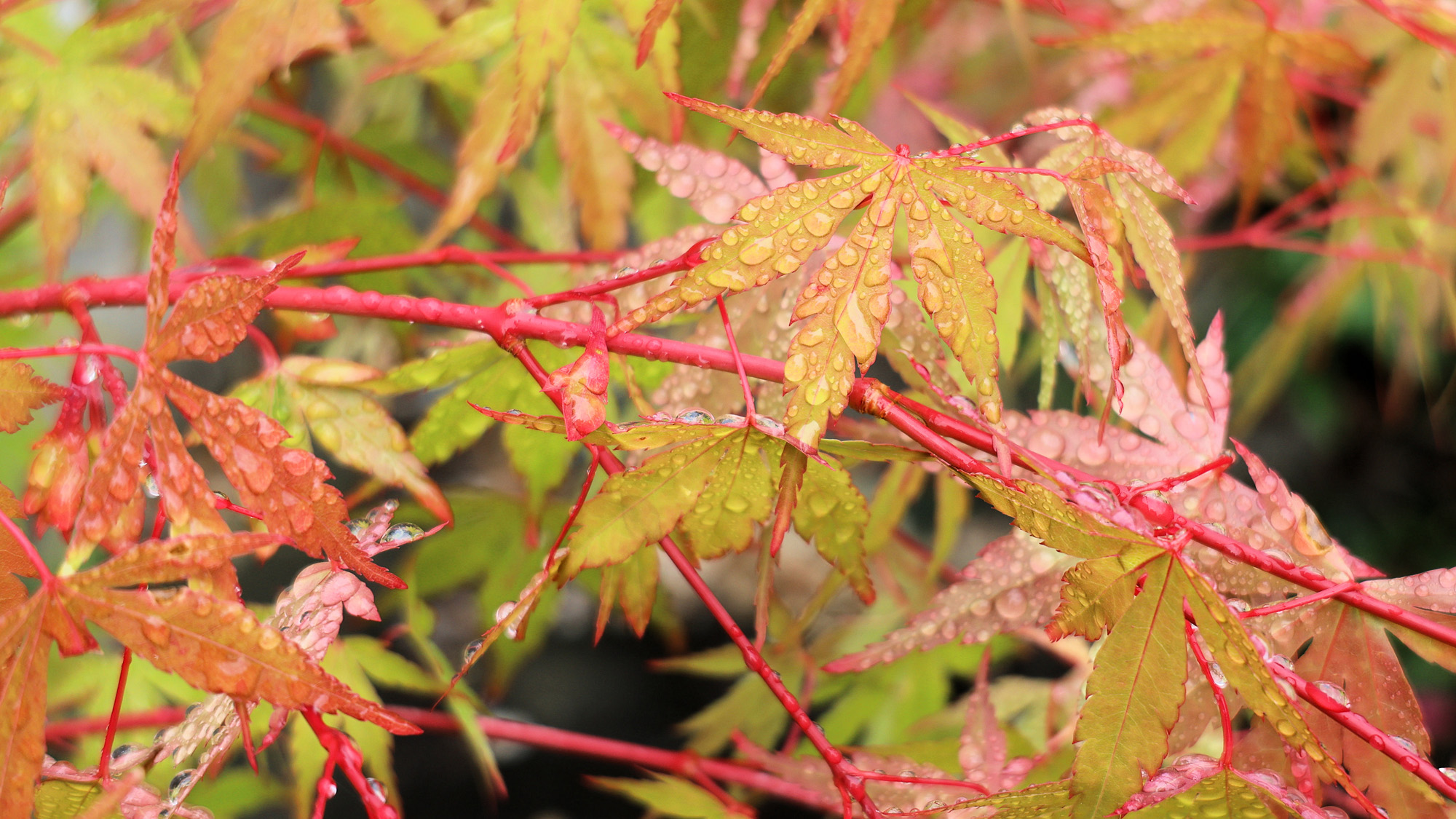

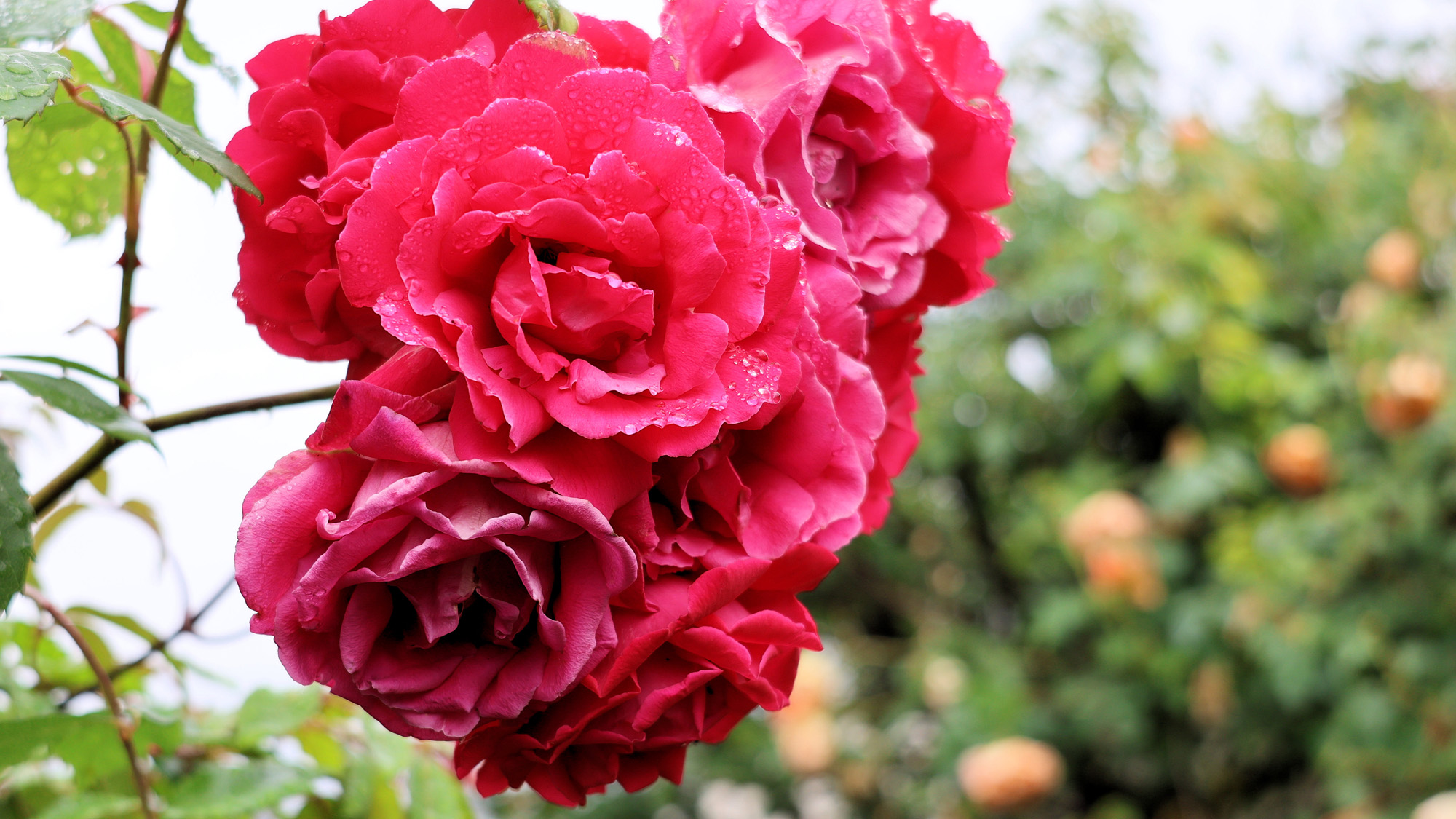
The R8 uses the same relatively small LP-E17 battery pack as the RP, which helps to keep the size down and the weight of both cameras down. Naturally though, smaller batteries have less capacity, meaning less shooting time before recharging. Even so, the R8 has more stamina than the RP: you’ll get at least 290/370 shots using the rear screen, or 150/220 shots using the viewfinder, in ‘smooth’ and ‘power-saving’ modes respectively. That’s a sizable step up from the battery life of the EOS RP.
To check on the battery’s ‘real-world’ performance, we spent the best part of a day ambling around city streets, taking around 200 shots and still having battery power in reserve.
Canon EOS R8 review: Video
The Canon EOS R8 aims to be a hybrid camera that’s equally adept at video capture as it is for stills. It certainly fits the brief on both counts, and there’s no 30-minute time limit for individual movie takes. However, you can only expect to shoot for around 30 minutes at the highest resolution and frame rate of 4K UHD at 50/60p, due to the build-up of heat. The ambient temperature of your shooting environment naturally plays a part as well. Set your sights a bit lower and you can expect to shoot at 4K 30/25/24p or Full HD 1080p for as much as two hours before heat stops play.
While the camera doesn’t feature IBIS, it does offer Canon’s usual Movie Digital IS for shooting video. This is Canon’s term for electronic image stabilization, which works by analyzing successive frames, cropping them slightly and aligning the relevant area to take camera-shake out of the equation. It’s enabled in the camera’s menu system, with off, on and enhanced options available, the last of which requires more severe cropping. Other video-centric options include Zebra striping and false color warnings.
Although the R8 doesn’t boast a stacked back-side illuminated full-frame image sensor with super-fast readout times (unsurprisingly considering the purchase price) it’s designed to minimize the ‘rolling shutter’ effect. True to its claims, irregularities in the shapes of fast-moving objects when shooting video are pretty minimal, and that goes for shooting stills with the electronic shutter as well.
Overall video quality is excellent, with up to 4K 60p being produced from oversampled 6K capture. Recording formats include Canon Log 3 and HDR PQ. CLog3 is a great inclusion for filmmakers, giving them greater flexibility dealing with exposure in post production, while HDR PQ similarly gives high dynamic range that’s compatible with the likes of HDR TVs, computer monitors and smartphones.
Considering that the EOS R8 is so good at both, the hardest choice is often whether to shoot video or stills. One solution is to shoot video and then use the Frame Grab facility in Playback mode. This gives you the option of saving individual frames as 8-bit JPEG or 10-bit HEIF still images from a 4K video clip. Naturally, they’ll be in a 16x9 aspect ratio but the megapixel count isn’t meager at 8.3MP.
Canon EOS R8 review: Verdict
Like anything else in life, cameras included, the Canon EOS R8 isn’t perfect. It could have a larger viewfinder, more direct-access dials and buttons for important shooting settings and dual memory card slots. And you might really miss IBIS, especially if you’re looking to shoot high quality video content. The kit RF 24-50mm lens is comparatively limiting and battery life isn’t all that great either.
But (and it’s a big but) the R8 delivers great bang per buck. It’s competitively priced and is a true hybrid camera that delivers outstanding performance for both stills and video, while making it as seamless and intuitive as possible to switch between the two while you’re shooting. The new-generation, deep-learned AI autofocus system is stunningly good at locking onto specific subjects and tracking them even during extremely erratic movements.
All in all, the R8 packs a quart into a pint pot and literally punches well above its weight. It gives you everything you need to capture pro-grade stills and video in a package that’s compact and lightweight enough to take along for the ride, wherever life takes you.

Matthew Richards’ passion for photography began as a child, learning from his father who was an acclaimed architectural, commercial, industrial and portrait photographer. Matthew qualified as an electronics engineer and began his career working for the BBC in the 1980s, testing, installing and repairing broadcast studio equipment. In the early 1990’s he switched to journalism and was employed as a feature writer, reviews writer and editor-in-chief at Future Publishing in the UK, working mainly on computing and technology magazines.
In 2001, Matthew Richards went freelance, pursuing his passion for photography and working on assignments in locations across the UK, as well as in the USA, Mauritius, Malaysia and China. Technical journalism still plays a major part in Matthew’s freelance career and he has been commissioned to write countless reviews and group tests of cameras, lenses and other photographic accessories over the last 20 years, for leading photography magazines including Digital Camera, Digital Photographer, N-Photo and PhotoPlus, as well as for a number of photographic websites.
